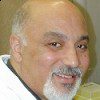
Researchers elucidate the structure of ion channels in the cell membrane
A breakthrough in basic science made by researchers from the Faculty of Medicine of Laval University may shed new light on cardiac arrhythmia, pain, epilepsy and some forms of paralysis. The details of this discovery are presented in the November 5 edition of the Proceedings of the National Academy of Sciences (PNAS) by a team led by Mohamed Chahine.
The normal contraction of a muscle depends on the movement of ions between the inside and outside of muscle cells. This also applies to the transmission of impulses in neurons. In both cases, ions cross the cell membrane via ion channels – openings created by the spatial organization of proteins embedded in the membrane. “These channels operate with voltage sensors that allow them to detect stimuli to trigger muscle contraction or nerve impulses, says Mohamed Chahine. Knowing the structure of these sensors is therefore vital to understanding the causes of certain neuronal or neuromuscular diseases. “
In May 2012, Dr. Chahine and colleagues published, in the journal PLOS ONE (http://www.plosone.org/article/info%3Adoi%2F10.1371%2Fjournal.pone.0038331), a study of a young patient and five members of his family who suffered from cardiac arrhythmia, conduction disturbances and atrial fibrillation. The researchers found in these patients a new mutation, affecting the voltage sensor of the cardiac sodium channel, which generates the selective leak of protons (H +). This breakthrough gave them the idea to “create” similar mutations in the laboratory by substituting amino acids in the channel proteins. In doing so, they were able to elucidate the structure of the four voltage sensors of sodium channels.
“Our work gives a better understanding of how sodium channels function and suggests new therapeutic avenues for diseases caused by their malfunction. The impact is immense “says Mohamed Chahine.
The article published in PNAS is authored by Pascal Gosselin-Badaroudine, Adrien Moreau and Mohamed Chahine, from the Centre de recherche de l’Institut universitaire en santé mentale de Québec, and their colleagues of Temple University, Lucie Delemotte and Michael Klein.
Text author: Jean Hamman, published in le fil de l’ Université Laval
Translation : J Poupart, CAN-ACN.
Image Source : Université Laval
Orginal Research Article: Proceedings of the National Academy of Sciences (PNAS)
